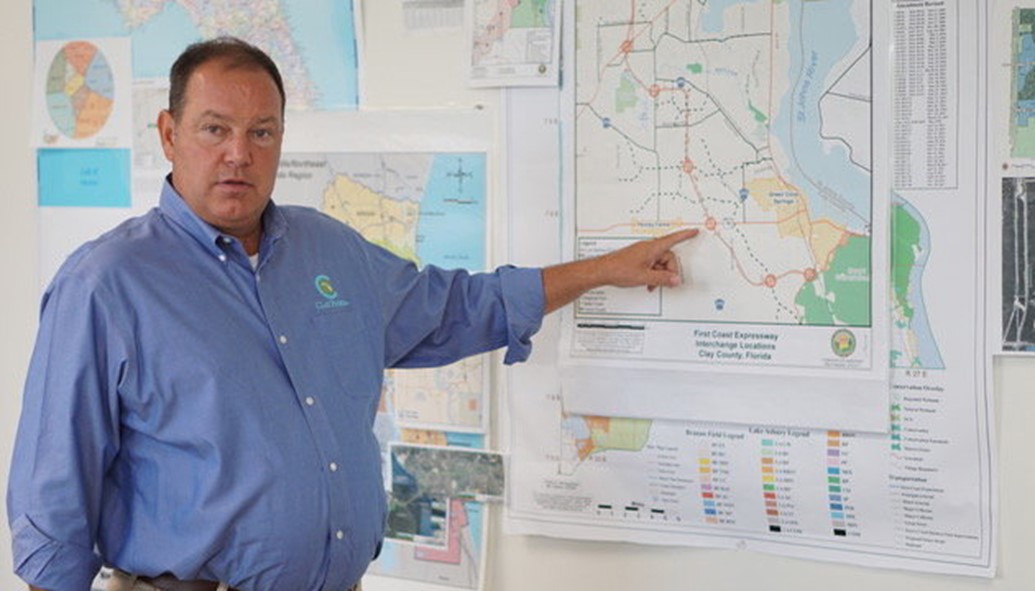August 02, 2019 Clay Florida Economic Development becomes 501(c)(3) not-for-profit corporation

FLEMING ISLAND – The Clay Florida Economic Development Corp. has officially transitioned into a 501(c)(3) nonprofit.
The CFEDC has been operating as a 501(c)(6) since 2014, which limited the way it incentivized local businesses and community leaders to join their efforts.
“Back in October, we submitted everything we needed to in order to become a nonprofit,” CFEDC President J.J. Harris said. “After some revisions and countless hours of work, on Oct. 31, we were officially filed with the IRS. On July 12, we received the news that our application had been accepted, so we are now officially a nonprofit.”
The organization quickly moved toward a 501(c)(3) status five years ago, Harris said. The CFEDC quickly embraced projects like the First Coast Expressway and began to spread its name through grassroot efforts like economic luncheons. Now that it’s a nonprofit, Harris said it they can do even more for the county.
“This enables us to expand our range of opportunity for grants, whether it’s on the community development side, say for instance parks and project-specific things the community likes to have, or infrastructure,” Harris said. “It also allows us to work more with foundations – big foundations, small foundations, companies like Lowe’s, Home Depot, Microsoft – for project-specific community development or business development activities.”
To be awarded 501(c)(3) status, the CFEDC had to answer one question to the IRS: “What are you doing for the residents to remove poverty?”
“Well, we worked with local businesses to match labor needs and business needs,” Harris said. “So, we reach out to businesses to find gaps in skill sets and work with local colleges to help students become the employee employers want. We try to facilitate business and labor and hopefully move people from no skills to some skills to increased skills and wages over time.”
Before the CFEDC was a nonprofit, businesses and community leaders had to agree to essentially pay into a membership. Now, those same businesses and collaborations can be charitable, which Harris said is a big incentive for creating new relationships and expanding upon old ones.
“Incentives is seen as a bad word to some but it’s how nonprofits make things happen,” Harris said. “We’re simply seen as more attractive to work with now.”
Harris said the CFEDC can be seen as an educational broker in Clay County economics. A business might have a goal in mind but in front of that goal is a seemingly impossible bridge to cross. According to Harris, the CFEDC makes that impossibility possible.
“We’re a hub of sorts for businesses and the community,” Harris said. “People might come to us with goal A, B and C in mind without knowing exactly how to get there. That’s where we come in. We help them reach their goals.”
One grant that allows the CFEDC to help those in the community is the Department of Economic Opportunity’s Defense Reinvestment Grant. Harris said this $57,000 grant allows them to fund marketing and events like the First Coast Expressway Summit.
“This grant allows us to market more, to put on more events and renew board structure governance to bring on new members,” Harris said. “It also allows us to take the time to reach out into the community and ask, ‘are your industry needs being met,” and if they’re not, we help bridge that gap.”
“This organization was created specifically to address investment concerns and infrastructure, business development and future growth and planning,” Harris said. “We’re strictly focused on that. Our partners at the [Chamber of Commerce] are more focused on business retention and expansion and that’s important, but we’re more focused on the initial investment.”
“Creating an opportunity for those investments in infrastructure that, once in the ground, people don’t see it, they forget about what it took to get that, so we work to inform people of that work,” Harris said.
“It’s easy to look at the big picture and forget about everything that had to happen to bring that big picture to life,” he said.
Harris said his job is, at its core, to bring in more taxpayers and to do so through economic development. The CFEDC becoming a 501(c)(3) will make doing that easier.
“My job is to bring in more taxpayers to reduce the overall taxpaying burden or, in other words, increase value in the community,” Harris said. “Every time that value goes up in the community, and that’s for new businesses coming in and people buying homes, that economic activity flows.”
